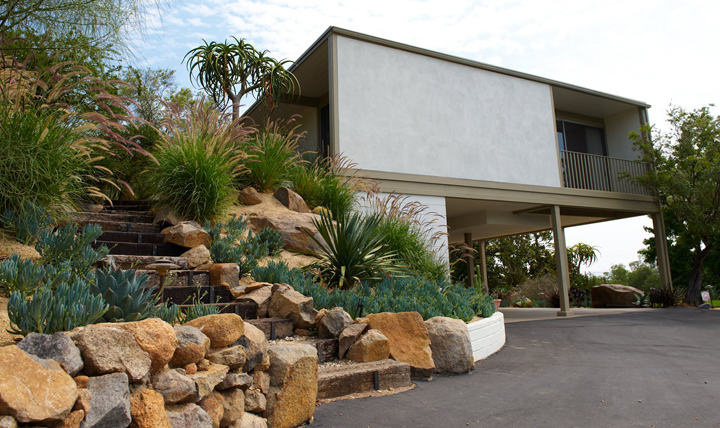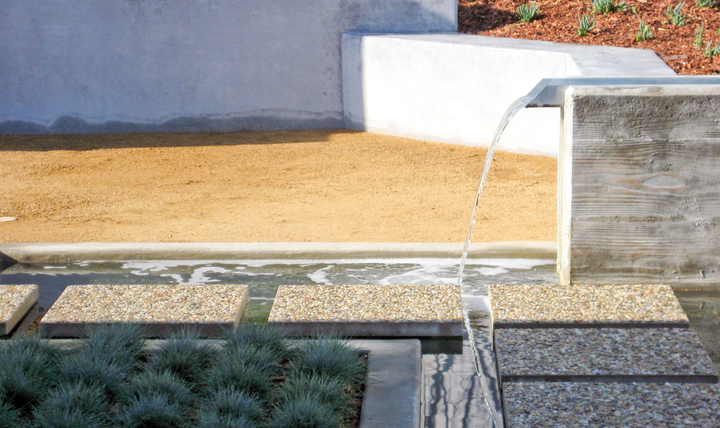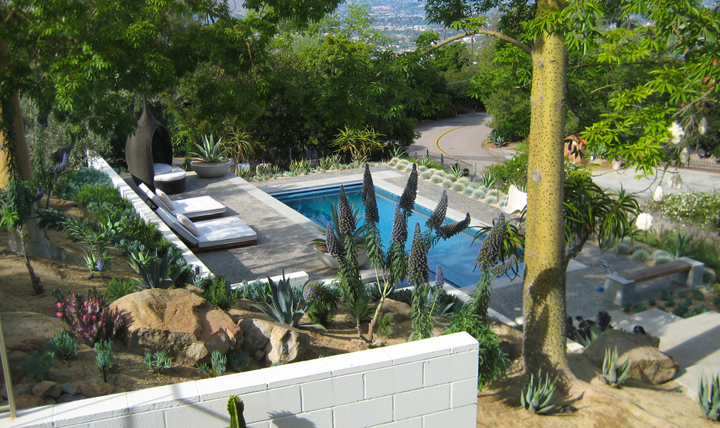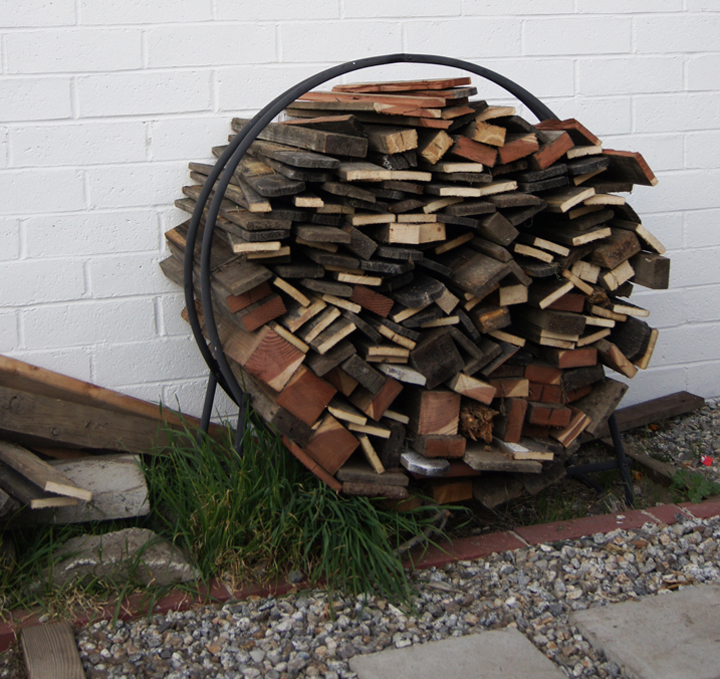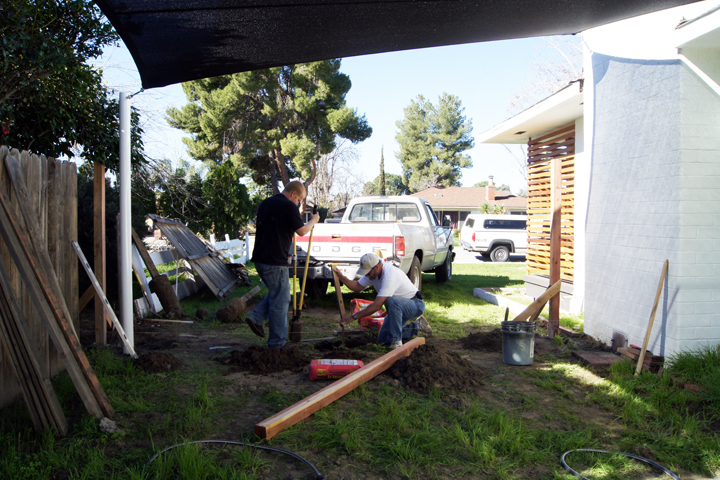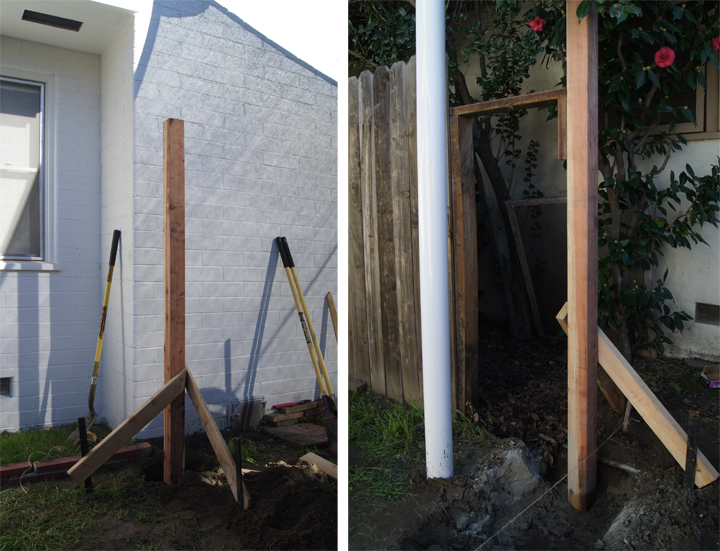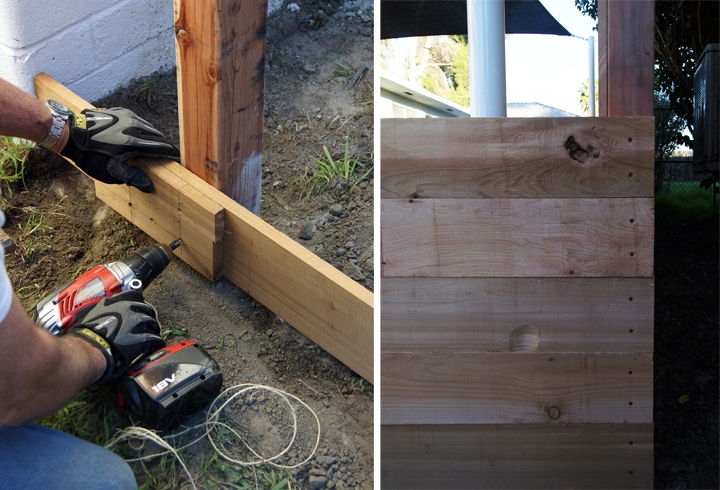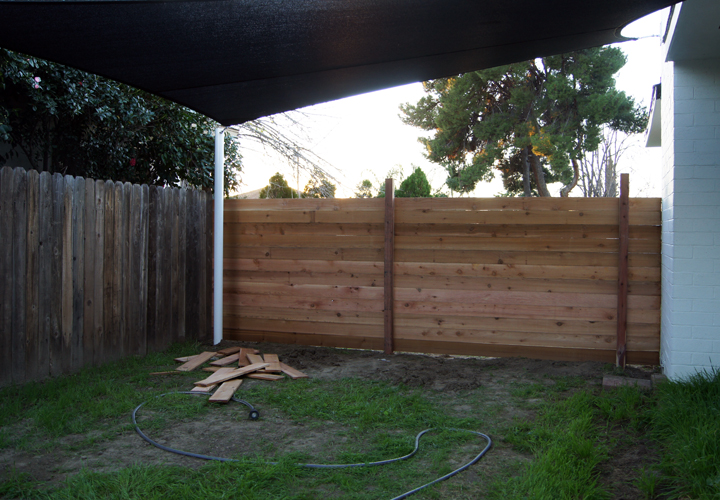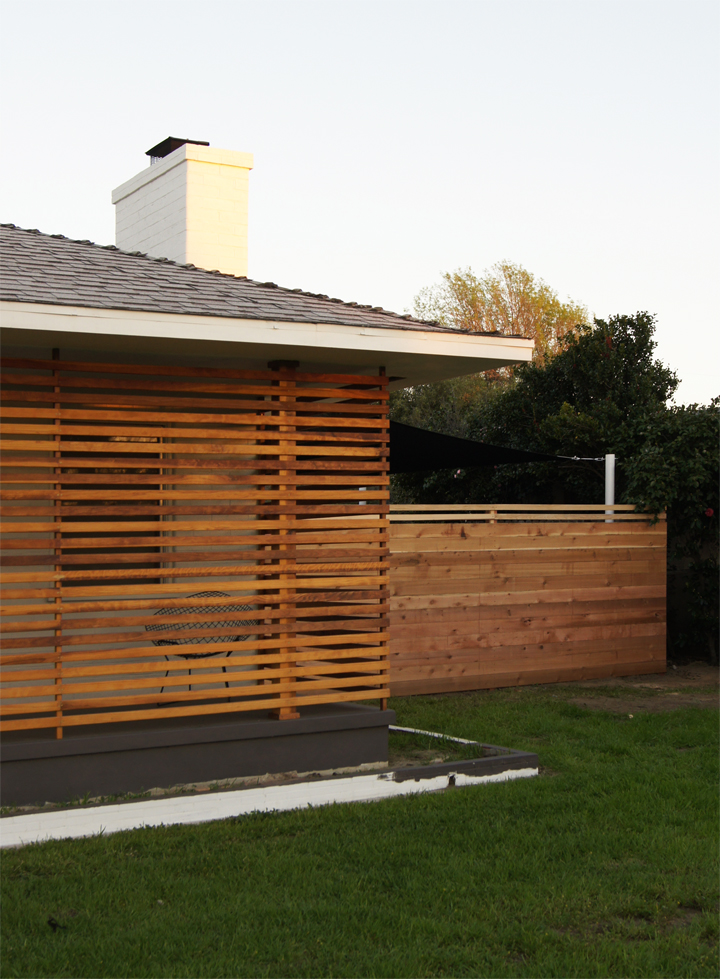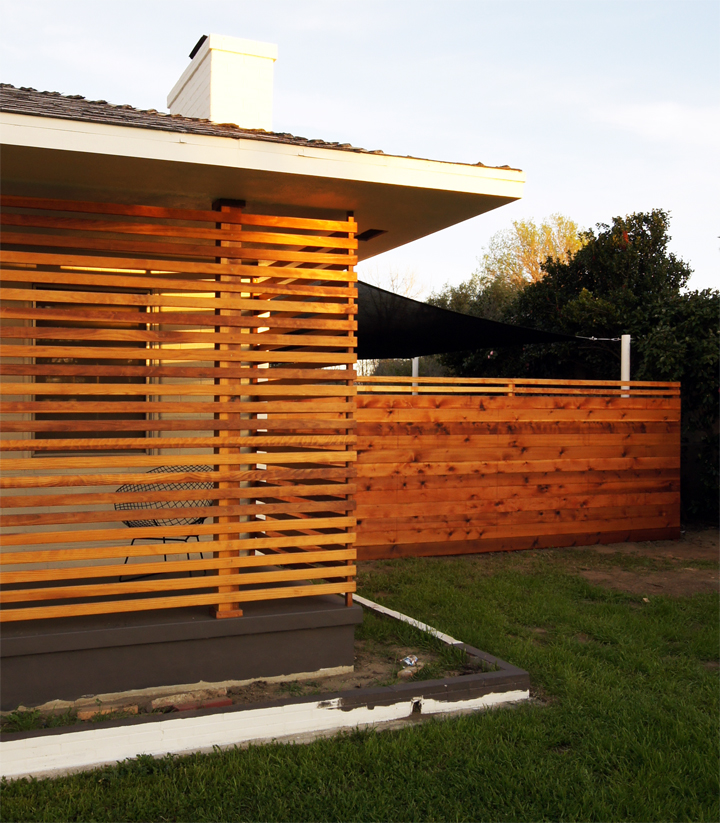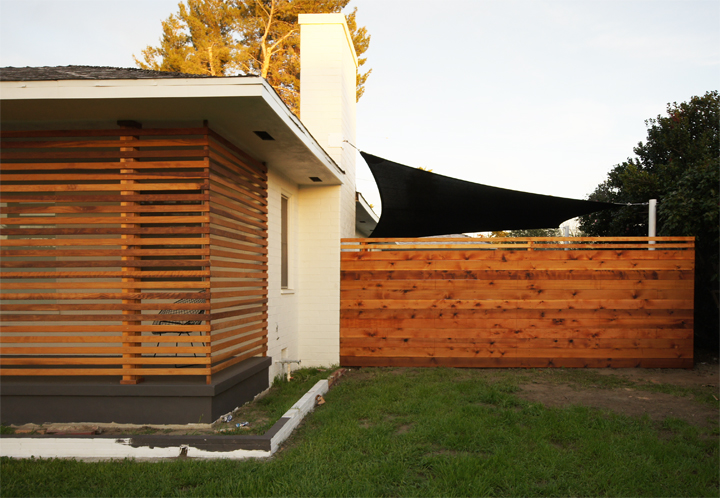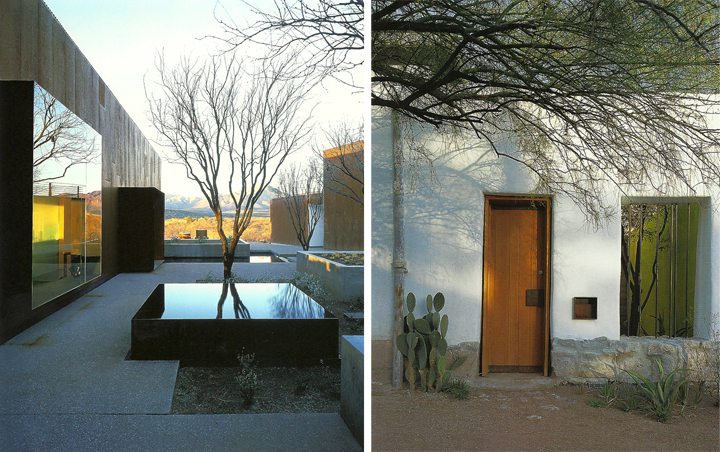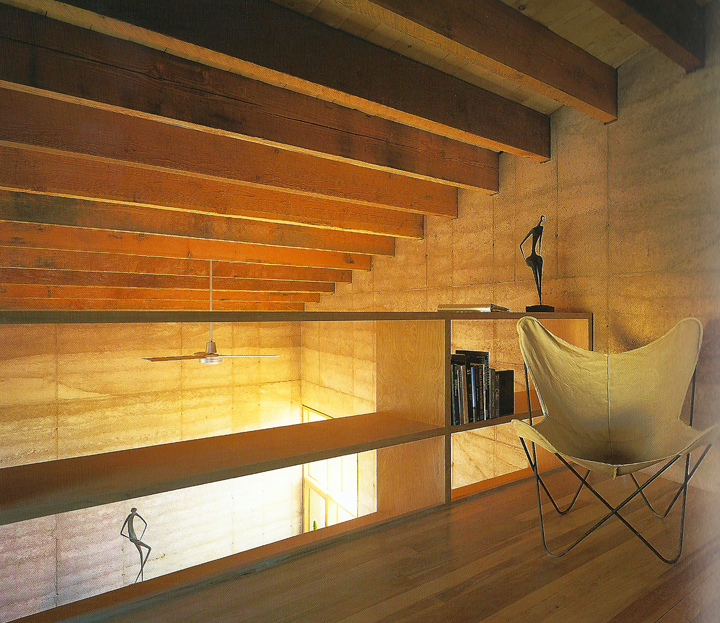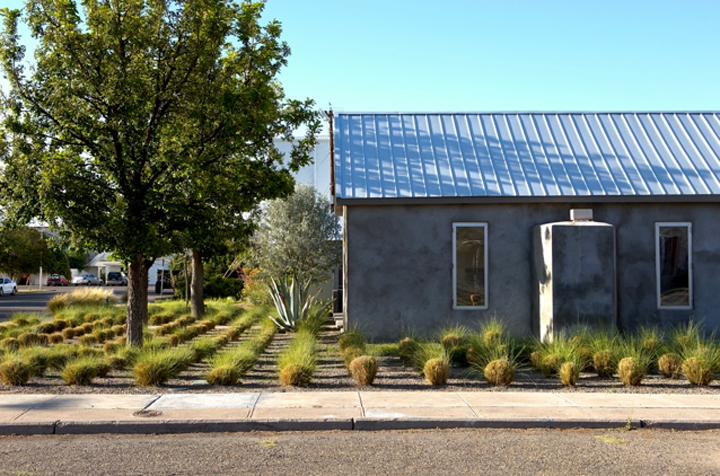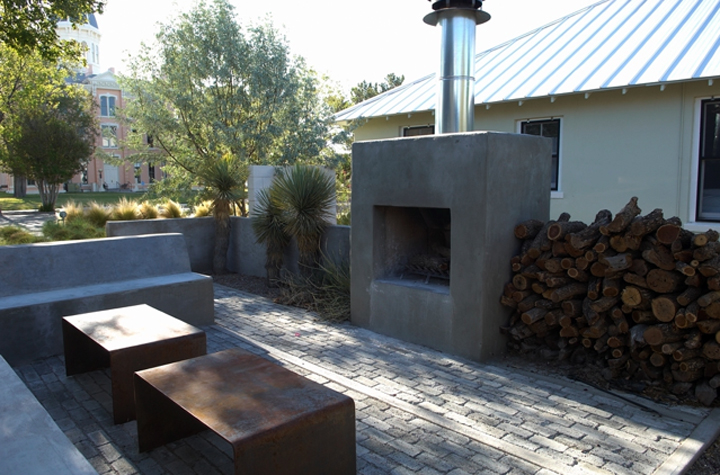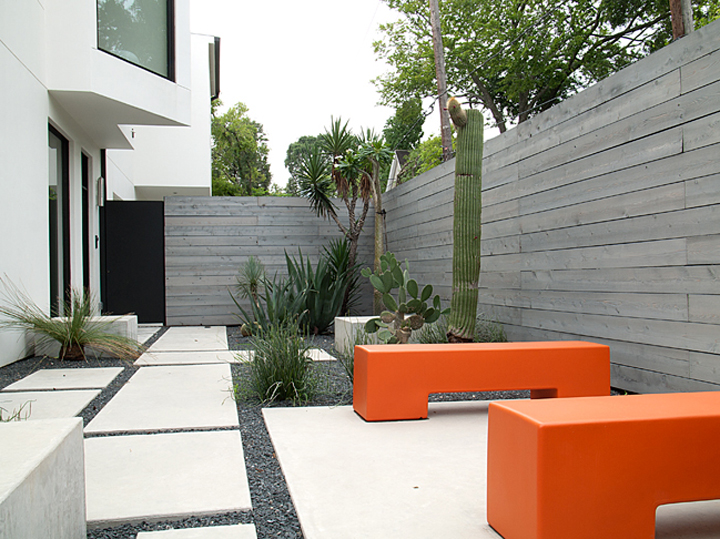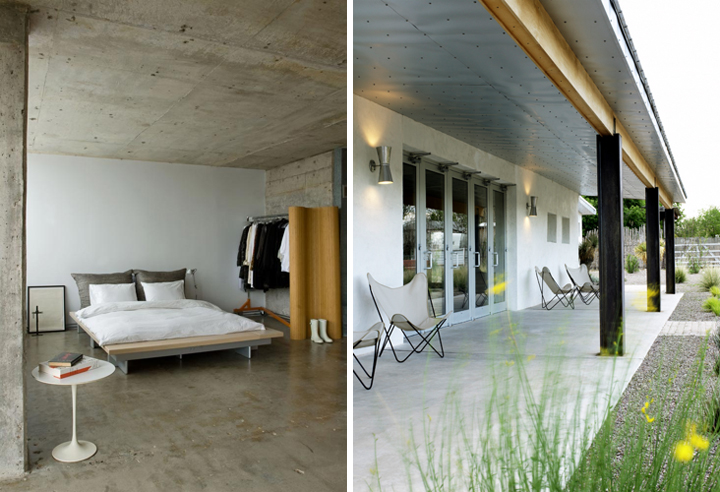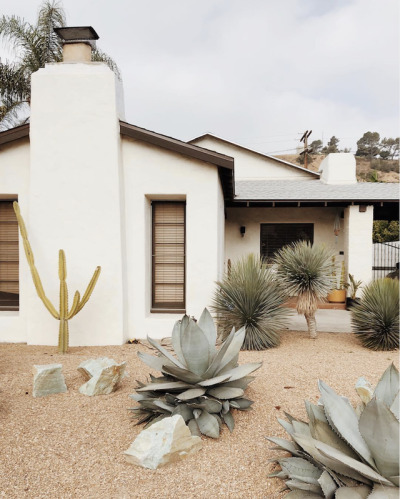Hey, it’s Ryan Prange! Fancy founder and lead designer at Falling Waters Landscape in San Diego.
So, why is he slumming it at the Brick House? Well, he’s helping us figure out how to landscape our little patch of weed riddled desert land and turn it into something respectable. I’ve really loved Ryan’s crazy award winning work which has been featured all over the place in magazines, on Bang for Your Buck on the HGTV as well as the blogs of course, and was stoked that we had a friend in common who could introduce us.
Unfortunately, it’s starting to be that time of year that we need to start taking the landscaping a little more seriously. It’s going to be blindingly hot in no time and my heads been filled up with all sorts of landscaping quandaries and soul crushing despair over our lack of budget and the need to learn some new DIY skills.
I turned to Ryan to ask him for some insights into his process and what tips he had for those of us who want to go modern with our landscape but might not have a huge budget or tons of experience.
***
Who (or what) influences you and your design process?
I read a lot. I try to stay up to date on the industry magazines specific to landscape, but also check out kitchen and bathroom magazines for inspiration. Really amazing things are coming out of Australia these days, that place is on the vanguard of trends when it comes to eco-friendly design and construction. If I see something that inspires, I usually try to sketch it out on whatever I have handy and then will reference it later. On new projects, sometimes the design comes quick and then we just tweak the details, but more often than not, I sit down, tune the Pandora to “design inspiration” and start messing with shapes and angles… something eventually happens.
As people have become more eco-conscious and budget strapped, what do you think will be the next big shift in landscape design?
People are demanding lower cost. Unfortunately something is always compromised when there is a strict budget. But we try to look at those problems as opportunities that maybe we would have looked past if the restrictions weren’t in place. We try to educate people that there are certain things you can compromise on and others that just shouldn’t be messed with. More often than not, we hear from clients that hired someone else; “It ended up costing us more because they screwed it up”. Lesson: Don’t hire the cheapest guy, hire the best guy and keep him on a short “financial” leash.
What person/residence would you most like to design for?
I would love to design a traditional Japanese Garden. I would dare say there aren’t many things as beautiful as a well-designed Japanese Garden. Even more than that, I would love to design a garden using Japanese theories but with plants native or acclimated to my climate (think Native Manzanita pruned to look like a Japanese Maple…mmm beautiful)
My ideal client is the person that trusts me, I don’t care how much money they spend.
What is the most interesting type of project for you to work on?
Hard to say. I really enjoy learning new things or new ways to build something, so the project that employs multiple custom-designed items would be the most interesting.
What’s the one thing every DIY landscaper should know before starting a project?
Every person should sit down and ask how much their time is worth. How much do you make an hour? Is this the best use of your time? There are certain things the average DIY’er should farm out… irrigation and masonry are best left to the pros, but of course, its possible to tackle, just do your homework.
Which current ideas or trends do you think are brilliant and which do you despise?
I’m in love with ornamental grasses. John Greenlee’s new book (The American Meadow Garden) is inspired and encourages appreciation for these great plants. I also love poured in place concrete anything; its beautiful in its simplicity.
I hate how everyone is using the word “sustainable”. Its the most overused word around. I saw a gym today in a strip mall calling itself “green” and “sustainable”. What makes you green, do you reuse the dirty gym towels and harvest the sweat to water your plants? Can you define sustainability? They are buzz-words that are being used to sell product. While there is nothing wrong with using clever marketing to sell… most of the time there is nothing clever about it, its just regurgitated jargon that people are programmed to respond to.
What is one thing every home owner should avoid at all costs?
The lowest bid. Also, avoid hiring someone just because they are working on the house next-door, or because they are a distant cousin, etc.
Any tips for those wanting to have a great landscape on a meager budget?
Yes. Plants will grow… plant them small. Use materials that will last a long time. There is a saying, “buy once, cry once” Really its true, if you cant afford it, don’t but the cheaper version, you’ll just end up spending more money in the long run. Talk to your friends/family… if everyone needs work done, or something fixed, perhaps you can convince your contractor to reduce costs by taking care of everyone at the same time. That equals more work for your contractor and less costs to all of you. Look for materials on Craigslist. Look for a creative contractor, or a design/build company with great references. Visit their past completed jobs if possible.
What are your favorite go-to plants for Southern California?
I said this already, didn’t I? Gotta love those ornamental grasses! Any of the Sedge grasses (Carex sp.) are great as well, low water, and thrive on neglect. Mother-in-Law tongue (Sanseveria sp.) is great too, its the “Betty White” of plants; having a great resurgence.
What would you like to be doing with your company in the next 5-10 years?
I would like Falling Waters to be recognizable. I want people to equate Falling Waters with quality and affordability (blah blah). We are currently working on a program to create a “Menu Garden” where clients pick all their materials from a “menu” and we then design using those elements. The square-footage costs will all be the same. The clients will know exactly what they are getting and Our time will be maximized since the guess-work is removed from the equation. This formula will work whether you have 500 or 5000 square feet. This idea is rooted in a belief that everyone should have a garden space they can enjoy and be proud of, no matter what the budget is. Eventually, the goal is to have a store-front and be able to offer design services, retail gifts and garden accessories, and possibly a venue for events. Construction and maintenance will form the backbone of the business, the retail side will reinforce the brand and draw in new clients. Any venture capitalists reading this, eh?
Best books you recommend?
Sunset Western Garden Book
The American Meadow Garden – John Greenlee
Private Landscapes – Pamela Burton
Making the Modern Garden – Christopher Bradley Hole
Gardening in the Southwest – Sunset
Patio – Jamie Durie
***
Damn. Now I’m getting revved up and motivated to go push our dirt around. I just got back from the San Diego Home and Garden Show to check out Ryan’s design entry as well as other landscape stuff, but more on that later.
Otherwise, go check out more of Falling Waters Landscape projects HERE. Or if you have a project big or small, some questions or have been stuck in a landscaping rut, you should totally touch base with Ryan HERE.

